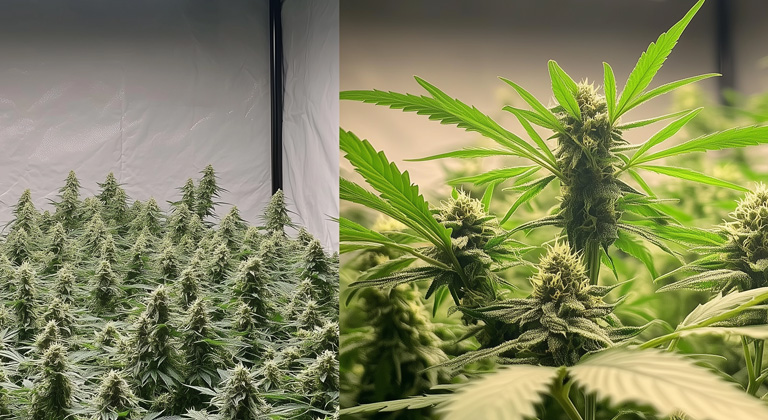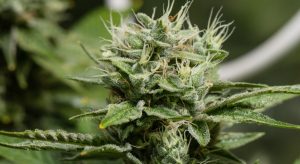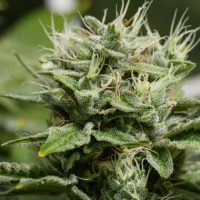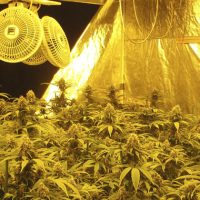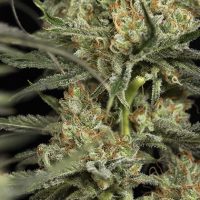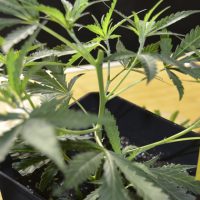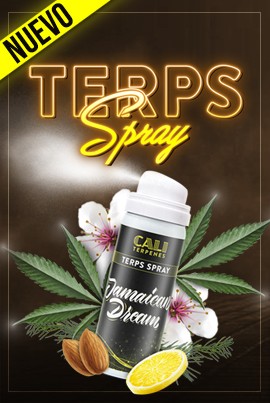LED lighting is already known by some growers as “the light of the future” due to its many advantages such as energy efficiency, complete light spectrum, and the high crop yields that can be achieved. But… Which LED lighting setup is the best? How do they differ? How does their light affect the plants? Join us to discover all the secrets of this type of lighting for cannabis cultivation.
What is an LED bulb in cannabis cultivation?
The light-emitting diode or LED is a semiconductor device that emits light when an electric current is applied. Unlike incandescent bulbs, LEDs don’t use filaments and are much more energy efficient.
General characteristics of LED grow lamps.
There are different types of diodes suitable for horticulture and cannabis cultivation, based on the radiation they emit.
- Blue light spectrum for the vegetative period.
- Red light spectrum specially for the flowering period.
- Ultraviolet or infrared, invisible to the eye but affecting yield and quality of the harvest.
- Full Spectrum, which mimics the sun’s white light and contains the full range of radiation that plants need throughout their life, all in one.
The combination of these diodes results in several types of LED lamps:
- SMD LED (Surface Mounted Device): Three diodes on the same chip, usually mounted with specific spectrums, blue for growth, deep red for flowering, etc. These units tend to produce more heat, like the Blooming LED, a pioneer in this technology, and have become somewhat outdated in favor of other lighter systems that generate less heat.
- COB LED (Chip on Board): This type encapsulates several diodes (more than three) in a single chip, enabling more uniform and powerful light emission. COB lights typically emit a more natural and bright light spectrum.
- UV or Infrared LED. They emit radiation outside the visible range, can be part of a full-spectrum fixture or be separate units for certain moments in the process, such as UV in the flowering phase for stronger resin production.
- Modular LED (Quantum Board): These modular panel systems are composed of multiple LEDs on a large, flat surface. They offer full spectrum and can cover large grow areas without hot spots or shadows.
- Full Spectrum LED: Simulates sunlight and is suitable for all life stages of the plant.
- Dimmable LED: Allows you to adjust the LED radiation according to the plant phase (growth, flowering…), for a more personalized result.
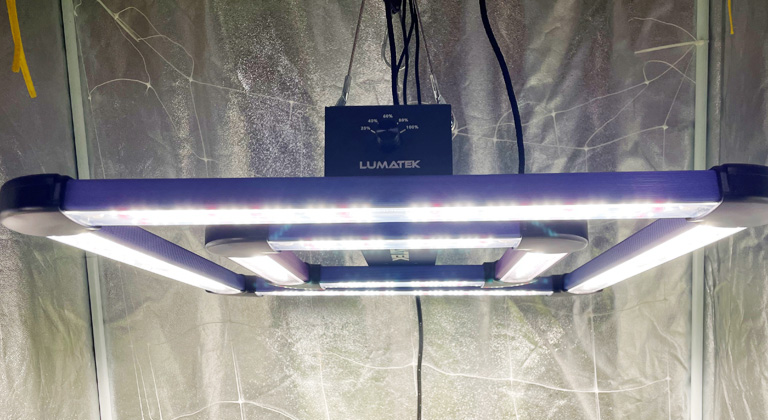
Advantages and disadvantages of LED lighting in cannabis cultivation
Using LED lights has many direct benefits and only a few drawbacks that are worth knowing to help maximize your cannabis yield. Let’s take a look, comparing them to other lighting systems like HPS and CFL.
Advantages
- Complete light spectrum: only one light is needed for the entire life cycle of the plant, saving time, money, and effort. With HPS, specific bulbs for growth and/or flowering are necessary.
- Emit a lot less heat than HPS, reducing the risk of burning your plants. Additionally, temperature control enhances both the taste and aromas of the final result, as the lower temperature means there is less volatilization of the terpenes. Similarly, cooling systems will be less necessary in hot places.
- Lower electricity consumption, greater efficiency per watt, and savings on your bill.
- High power; unlike older models, energy utilization has been improved to produce more light for the plants without increasing heat.
- Various models and sizes to suit all grower’s needs, though both HPS and CFL lighting systems are also highly standardized.
- Long lifespan, up to 100,000 hours. Low-consumption bulbs, like CLF, can last between 7,000 and 15,000 hours. The HPS bulbs can last between 20,000 and 30,000 hours, all depending on usage and light efficiency, which decreases after a certain number of hours and is a key factor in indoor grow lighting.
- High-quality materials, durable, lightweight, and easy to handle.
- Easy installation, without bulky reflectors or reflection hoods.
- Optimal control of the grow through regulators. These controls can also be applied to HPS via a ballast.
- Nowadays, LED setups have managed to match and even surpass HPS in producing deep red radiation, resulting in an increase in harvests with a similar energy consumption.
Disadvantages
- Higher initial cost compared to HPS, both in equipment and spare parts.
- Higher learning curve than other lighting systems. The grower must study which radiation power benefits their crop most at each stage of this process.
- Less light penetration: HPS lights emit a large amount of red spectrum radiation, which helps light energy reach the lower branches. Although LEDs distribute light more evenly across the surface they don’t achieve as deep penetration, however, the lights can be placed closer to the plants without burning them to overcome this disadvantage.
Technical characteristics of LED lighting in cannabis cultivation
LED lights offer a set of specifications that need to be known and controlled to achieve the best results. These features allow you to differentiate one fixture from another, as well as study the requirements of the crop to help choose a particular product. Here are the characteristics to consider.
PE/Photosynthetic Efficiency
This value, expressed in micromoles/joule (μmol/J), measures the amount of useful photons produced by the lamp for each unit of energy it consumes. The most efficient LED lights have values of 2.0 μmol/J or higher, which means they use less energy to produce the same amount of light as other types of sources.
For example, in a high-quality LED you’ll find efficiency values of 2.5 – 3.0 μmol/J.
Heat emission
LED lights emit very little heat radiation. However, some older models generate more heat than newer ones.
Power
LED lamps consume less energy than other lamps, as seen in the comparison with HPS, for example. Depending on the size of the grow, LEDs ranging from 100W to 600W, or higher, can be found. The greater the power, the more evident its energy efficiency.
PAR
Cannabis plants love sunlight; in fact, they need it in large amounts, more than other plants, to obtain energy through their photosynthesis process and achieve a maximized, optimal quality harvest.
Although it has been proven that there are more wavelengths that also affect the flowers, plants prefer those between 400 and 700 nanometers. This value is known as the PAR range (Photosynthetically Active Radiation), and it’s very important to know.
We can quickly see how each segment of light radiation influences plant growth.
- Blue light (400 – 500nm): special for the vegetative growth stage, helping the plant produce new branches and stems that are stronger, compact, and robust.
- Green light (500 – 600nm): Plants reflect a lot of green light, which is why we see them in that color. However, a small amount is absorbed and can contribute to healthy growth, although it is not as important as other colored light.
- Red/deep red light (630 – 660/720 – 740nm): As previously mentioned when discussing HPS lights, red light is the most crucial during the flowering phase as it’s essential for proper flower growth and bulking. Deep red is responsible for penetrating the upper layers of the plant and significantly speeding up flowering.
- UV and Infrared light: These are outside the visible light ranges. Infrared assists in mimicking natural sunlight, while UV adds intensity to resin production at the end of the flowering cycle.
PPF and PPFD
These acronyms represent values measuring both the actual light emitted by the lamp (PPF) and the real light reaching the plants (PPFD). These are very important measurements when choosing your lamp, and although it might seem very technical, it’s easy to understand, as you’ll see below.
- PPF (Photosynthetic Photon Flux): It’s the measure of photon emission produced by an LED lamp per second and gives an idea of how much total light it emits. It’s measured in micromoles per second (μmol/s) with the best lights having higher numbers because they produce many photons. The more economical ones might have between 0.8 and 1.5 μmol/s.
- PPFD (Photosynthetic Photon Flux Density): This tells us how much of the light emitted by the lamp reaches a specific part of the grow, the actual amount of light received by the plants in a given area. It’s measured in μmol/m2/s.
Both measures must be considered to calculate light distribution in the grow, as too little will result in slow growth, and too much can burn the plants. The growth phase of the plants must also be considered.
To give you an idea, here’s a general summary of what your cannabis grow needs at each stage:
- PPFD for seedlings or cuttings: 200 – 400 μmol/m2/s.
- PPFD for Vegetative Growth Stage: 400 – 600 μmol/m2/s.
- PPFD for Flowering Stage: 600 – 1000 μmol/m2/s.
Cooling System:
Not all LED lights are cooled the same way, and this affects the energy efficiency of the system. There are two types:
- Active: with fans or built-in cooling system. Commonly found in older equipment.
- Passive: usually found in LED light bars. These LEDs generate so little heat that only some heat sinks are used.
Coverage Area
Another significant point is knowing the space you want to illuminate in your cannabis cultivation. The coverage area, also called the cultivation area, is indicated in the technical description of any LED lamp. With a wide variety of models available, you’ll find lights suited to all types of grow sizes.
Light Angle
In addition to knowing the coverage area, you should also consider the light distribution created by the angle at which the lights are hung.
- Narrow angles (45 – 90º) – Suitable for focusing on a small area, perfect for penetrating the layers of taller plants so the light reaches further down.
- Wide angles (120º or more) – Distributes light over a larger area, useful for large spaces or shorter plants.
CRI
This acronym stands for Color Rendering Index. It indicates how well real colors are represented under LED lighting.
It’s not essential for plant development but interesting to know, as a high CRI could help distinguish colors better. The helps you to assess the health of your plants, such as whether they’re green, have any spots, or signs of pests. You can also use glasses that show the true colors.
Additional Functions
The most important technical features can be complemented with some extra functions that growers might value, depending on the type and size of their grow.
- Chain connection: the lamp includes a port to connect several lights simultaneously. This allows you to increase or decrease the power of all lamps at once.
- Sunrise and sunset simulation: smooth transitions to reduce light stress.
- Smart control through an app.
- Intensity control (dimmer): This intensity regulator is a very useful tool for adjusting light intensity according to the needs of the grow, saving energy, reducing temperature, simulating natural light cycles, and improving the quality of the buds during flowering. It can be built into the lamp or used with a controller.
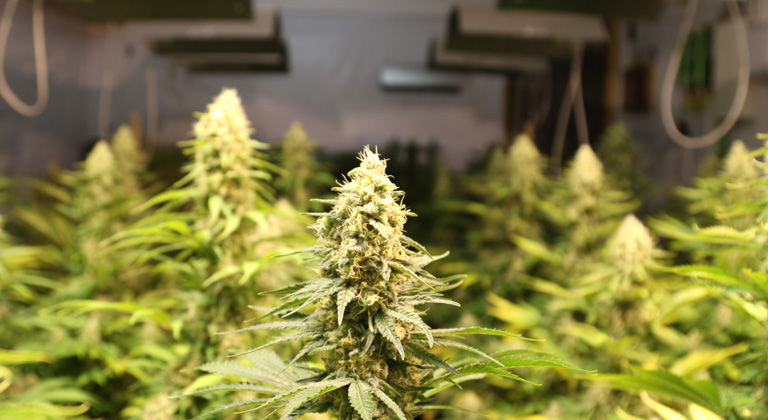
How to Choose a LED Lamp for Cannabis Growing?
Now that you know the most important technical characteristics, the challenge is choosing a lamp that meets the specifications of your grow space.
- PE/Photosynthetic Efficiency: Choose high-quality LEDs with efficiency values of at least 2.5 – 3.0 μmol/J.
- Look for a lamp that emits as little heat as possible.
- Select the necessary power (W) for your grow space.
- Wide PAR range
- High PPF and PPFD numbers.
- Passive cooling system.
- Choose the coverage space and light angle that best suit your needs.
- Make the most of the additional features!
Installation and Maintenance
Installing a LED Lamp: Correct Height and Power
Once you’ve chosen the LED lamp, all that’s left is setting it up in the tent or grow room. This step isn’t too complicated; just hang the lamp from the bars or ceiling using the cables and hooks that are typically provided.
The key point is the height of the lamp in relation to the plants. Too close, and they can burn; too far, and they’ll grow slowly. Here are some general recommendations, but bear in mind that everything depends on the type of LED lamp you have and its technical characteristics.
- Seedling stage (germination, young seedlings or cuttings): between 60 and 90 cm (24 – 36”) as seedlings are very sensitive, it’s better to keep the light away.
- Vegetative growth stage (when shoots, branches, and leaves grow): between 45 – 60 cm (18 – 24”) as plants need more light in this phase.
- Flowering (when buds develop): between 30 – 45 cm (12 – 18”) since flowers need a lot of light to develop and grow.
It’s necessary to consider the power values of the light and the PAR to find a balanced distance that doesn’t burn the plants or cause stunted growth. Be cautious: when you double the distance, light intensity reduces to one-fourth due to the Inverse Square Rule.
Consider the light’s power, its coverage area, and adjust the light according to the growth stage as advised. You can also use a PAR meter, a tool that measures the useful light for your plants’ photosynthesis, giving them the exact energy they need.
And finally, remember that the coverage area is well focused straight, down but not as well to the sides, so you’ll have good illumination on the plants directly beneath the light and at most 20cm to the sides.
Usage and Maintenance Recommendations
LED lights don’t require as extensive maintenance as HPS might require, however periodic checks of aspects that might interfere with the development of your grow are recommended:
- Height adjustment: follow the instructions provided in the previous section to achieve a successful grow.
- Regular cleaning: use a dry soft cloth to remove dust and residues.
- Check cooling and ventilation.
- Test the PPFD value’s effectiveness with a lux meter.
- Ensure the LED light covers the full spectrum.
- Verify that the light coverage is sufficient for the grow area.
General Tips for Growing Cannabis with LED
You’ve got your LED light selected and installed in your grow space, great! Let’s wrap up with a few suggestions that’ll come in handy when starting a cannabis grow with this kind of lighting.
As you’ve seen, this light is a fantastic innovation that’s already become a preference among growers. However, it comes with a steeper learning curve than other systems, requiring the consideration of several factors:
- The LED light changes the plant’s metabolism. With more deep red, blue, and infrared radiation, its feeding capacity alters, requiring a specialized macronutrient supply rich in calcium, iron, and magnesium.
- The LED light heats the plants less, so they grow in a cooler environment and require less watering. Don’t overdo it.
- Compensate for the “low temperature” by raising it to just over 26º. This also improves the absorption of the macronutrients.
- It’s advisable to use a lux meter to measure light incidence on the grow and identify areas where the light doesn’t reach directly. Remember that the LED light directs the illumination downward, but not as much to the sides.
- As previously mentioned, the LED light doesn’t warm the environment as much, so there is less evaporation and the plants need less hydration. Use slightly smaller pots and water more frequently with less liquid.
- Be careful with the type of LED, and choose the most suitable one for your grow. There are many possibilities, but apart from full spectrum lamps, others can be found for a specific phase, such as flowering or growth. But don’t get confused or you could ruin the crop.
- Don’t purchase low-quality LED lights. Cheap lights of dubious origin or labeled “for beginners” often have LEDs with poor light quality and consume more than other high-efficiency options. Make sure to buy from a trusted source. Any issues that arise will be easier and faster to resolve.
- Get some optimized vision glasses to see the true colors of the grow and accurately detect deficiencies, pests, and the general health of the plants. Some are specifically designed for this purpose, and the best ones include spectrum correction filters or blue light protection.
- Be cautious with incorrect light cycles. Autoflowering plants can thrive with a light cycle of 18-24 hours from birth, as they’ll continue flowering automatically. However, feminized seeds are typically grown with an 18-24 hour ratio during the vegetative phase, then switched to a 12-hour light, 12-hour dark cycle for flowering.
If you’re a beginner, pay attention to these lighting ratios and use a timer to avoid mistakes.
- Keep in mind that no matter how sophisticated or expensive the equipment, it won’t magically yield high-quality flowers. Don’t get discouraged; review our tips and determine what’s best for your grow.
We hope this brief guide has been helpful, not only in choosing the most suitable LED light, but also in resolving any doubts about this type of lighting. See you under the lights!
